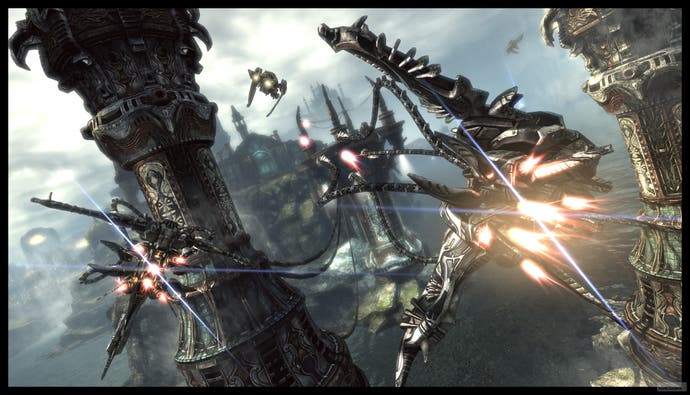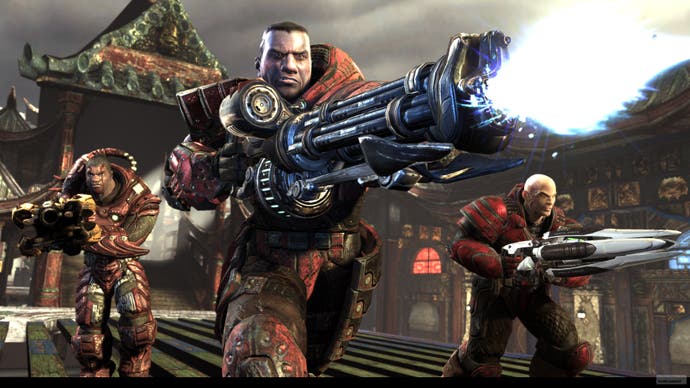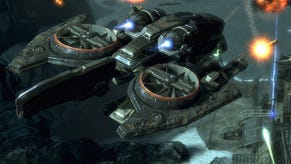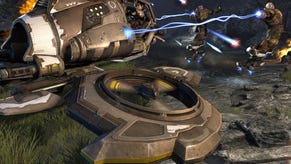Creating Unreality
Epic's Chris Wells on the art of Unreal Tournament 3.
State of the Art
The change isn't as simple as just requiring more detail, either. Successive generations of hardware have moved the goalposts in terms of what artists need to know, and the level of talent required to express the vision of concept artists and game designers.
"If we went back say, two previous generations - maybe to PSone - when characters were 1000 polygons or even less, maybe 800 polygons, a lot of detail that you can put on a character could be implied, as opposed to fully explained," Wells tells us. "That pretty much levelled the playing field for a lot of artists to create assets."
"The more detail that's required, the more expectations that consumers have in this generation, the more knowledge you need to have to know how to place those details into characters, environments, weapons or what have you. You need more of an eye for detail - and for character artists in particular, you need a really good, sound foundation in anatomy - human anatomy, animal anatomy, and so on and so forth."
He pauses for a second. "It's like, at this point, the limitations are just how much knowledge you have," he concludes. However, for talented artists who have been able to keep up with the rapid progress in this field, the increased difficulty of the job is traded off against a fantastic boon - namely the ability to express their creativity in far more rewarding ways.
"It was sort-of born out of necessity, since we're trying to express so much detail," Wells muses. "The concept sketch gives you very broad strokes in terms of how the character will develop, and what have you."

"To put all that detail into the concept sketch would take longer to do, and we would still arrive at the point in the model of having to put that detail in anyway. So, we really leave it up to the modellers and the texture artists to put their own creativity into it."
At the other end of the spectrum, though, Wells acknowledges that there is a lot less scope for artists to make mistakes - which, we sense, can also restrict the ability to experiment with new ideas. When every character takes six weeks to create, going back to the drawing board is a painful process; it's important to get the art right first time.
Learning Process
As artists get to grips with the next-gen development process, though, new ways of working are emerging which prevent artwork from being wasted - and allow artists to experiment without risking wasting months on a creative dead-end.
"There's definitely much less room in the schedule for doing assets over again," Wells confirms, "but there are some workarounds to make sure that you avoid redoing work."
"You can start from creating a base male and female model, which you use as a template to create all of your characters. If you do that, it saves you a lot of time, and you retain anatomical proportion even though you have a lot of gear on the characters. You're also not remaking the wheel every time."
"Secondly, as you go to create these hard surfaces on the armour - instead of modelling it out, or testing out an idea that may be different from the concept, a good idea is to do a quick sketch or paint-over of a screenshot of the model. That way you can flesh it out and really see if the elements work together."

Of course, what we're discussing here is still an industry in flux; the development cycle for the PS3 and Xbox 360 is only a few years old, and both artists and coders have much learning still to do before they can fully exploit the power of Sony and Microsoft's new systems.
So, to throw a tricky question out there, just how much more detail does Wells think we'll be seeing in our console games by the time the PS4 and Xbox 720 appear on the horizon?
"Oh, that's a tough one," he chuckles. "You know, you can always optimise more. You can always squeeze more out of it - and you know how these cycles go. Once you get to that fourth or fifth year of a console's life, that's when people are really using everything, and running on all cylinders with the platform."
"I think it'll turn out the same way for this generation. I don't know what percentage we could say we're using, of each particular platform - but I think you'll see the same thing."





